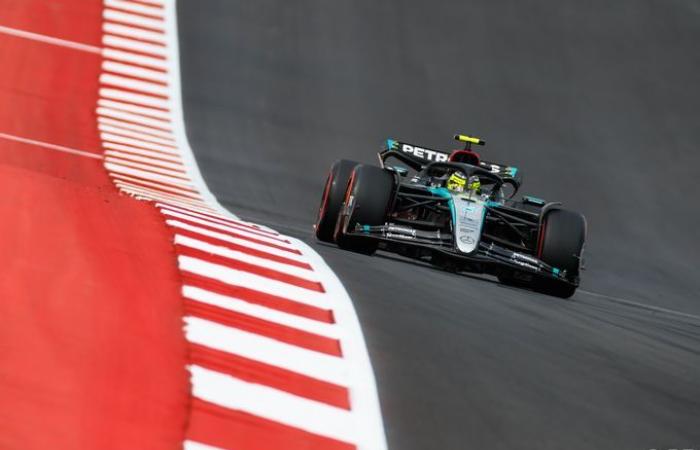
Mercedes F1 has still not succeeded, after 3 years of ground effect regulations, in producing a car capable of being predictable in terms of performance.
Sometimes very fast, sometimes very slow, the W15 seems to continue on the same trend as the W13 and W14, even if it finds itself closer to the top of the grid.
This inconsistency greatly irritates Lewis Hamilton, frustrated at not finishing in style at Mercedes F1. George Russell, who fares a little better, is a little less critical than his teammate.
Asked what he thought could be the problem that blighted Mercedes F1's season, Steiner said the team did not understand ground-effect F1 cars.
“They won three races this year. Then they said 'Oh, now we understand what we need.' And then the next race they didn't do it. That means they didn't understand that.”
“Toto (Wolff) said several times this year 'We understand now what we have to do' and things like that. But they didn't understand it. The others don't have such big variations of a circuit to another, from one setting to another.”
When asked where he thinks the problem lies, Steiner replied: “If I knew this, Toto would pay me for this. If they don't understand this, how can I understand it?”
“I think these ground effects cars are so difficult to understand, with the correlation between the wind tunnel and the track being tricky. And that's the most important thing. You find something in the wind tunnel and you know how to translate it on the car, but when you put it on the car, it doesn't do what it should do, well what you think it should do.”
“It depends a lot on what ride height you use. When you talk about it, it seems too simple. If they could understand it… I mean, they could understand it, but that's what McLaren understood when they have brought their first big update in 2023. Since their F1 is running normally, they know exactly what to look for in the wind tunnel.”





